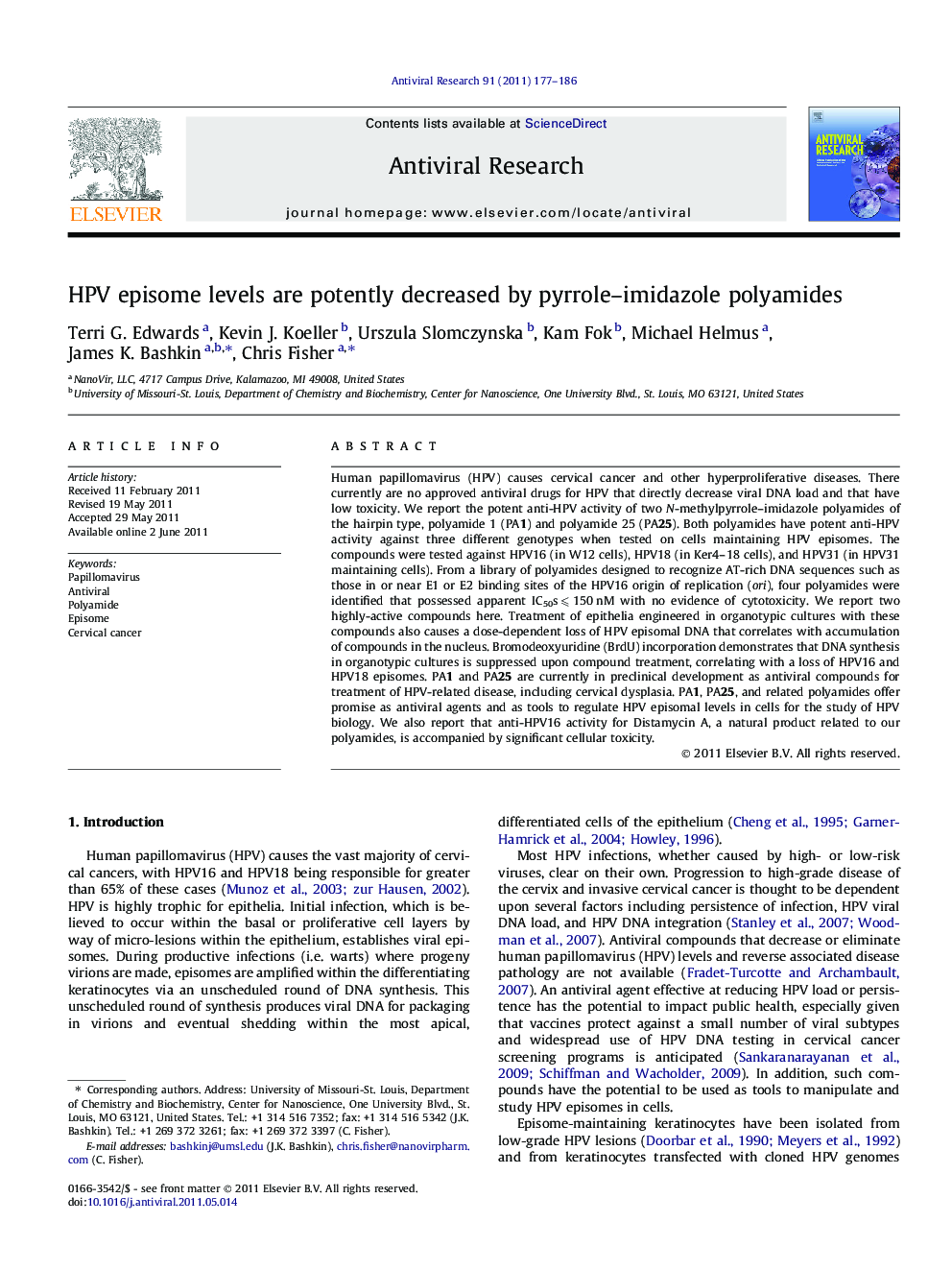| Article ID | Journal | Published Year | Pages | File Type |
|---|---|---|---|---|
| 2510561 | Antiviral Research | 2011 | 10 Pages |
Human papillomavirus (HPV) causes cervical cancer and other hyperproliferative diseases. There currently are no approved antiviral drugs for HPV that directly decrease viral DNA load and that have low toxicity. We report the potent anti-HPV activity of two N-methylpyrrole–imidazole polyamides of the hairpin type, polyamide 1 (PA1) and polyamide 25 (PA25). Both polyamides have potent anti-HPV activity against three different genotypes when tested on cells maintaining HPV episomes. The compounds were tested against HPV16 (in W12 cells), HPV18 (in Ker4–18 cells), and HPV31 (in HPV31 maintaining cells). From a library of polyamides designed to recognize AT-rich DNA sequences such as those in or near E1 or E2 binding sites of the HPV16 origin of replication (ori), four polyamides were identified that possessed apparent IC50s ⩽ 150 nM with no evidence of cytotoxicity. We report two highly-active compounds here. Treatment of epithelia engineered in organotypic cultures with these compounds also causes a dose-dependent loss of HPV episomal DNA that correlates with accumulation of compounds in the nucleus. Bromodeoxyuridine (BrdU) incorporation demonstrates that DNA synthesis in organotypic cultures is suppressed upon compound treatment, correlating with a loss of HPV16 and HPV18 episomes. PA1 and PA25 are currently in preclinical development as antiviral compounds for treatment of HPV-related disease, including cervical dysplasia. PA1, PA25, and related polyamides offer promise as antiviral agents and as tools to regulate HPV episomal levels in cells for the study of HPV biology. We also report that anti-HPV16 activity for Distamycin A, a natural product related to our polyamides, is accompanied by significant cellular toxicity.
